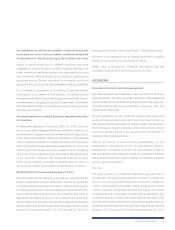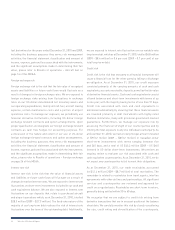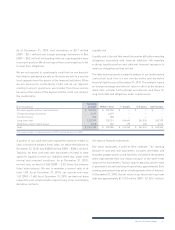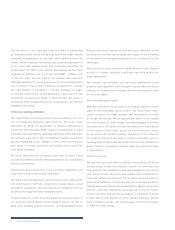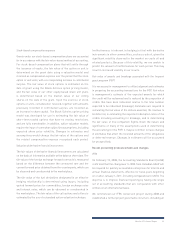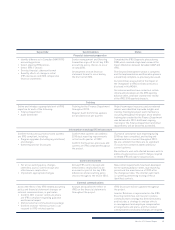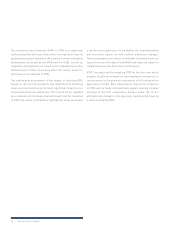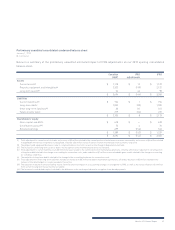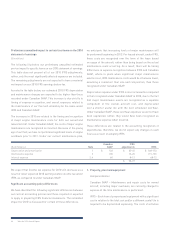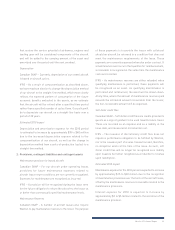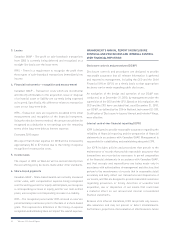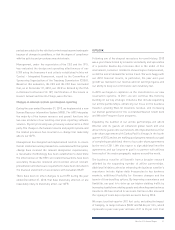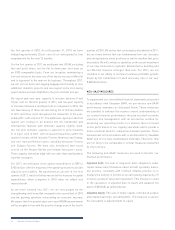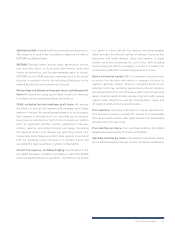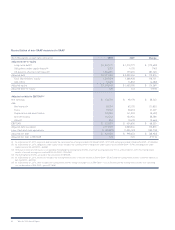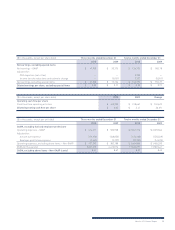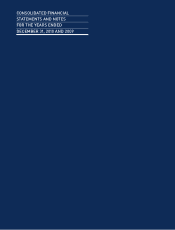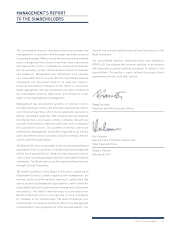Westjet 2010 Annual Report Download - page 51
Download and view the complete annual report
Please find page 51 of the 2010 Westjet annual report below. You can navigate through the pages in the report by either clicking on the pages listed below, or by using the keyword search tool below to find specific information within the annual report.
WestJet 2010 Annual Report 49
that restore the service potential of airframes, engines and
landing gear will be considered components of the aircraft
and will be added to the carrying amount of the asset and
amortized over the period until the next overhaul.
Depreciation
Canadian GAAP – Currently, depreciation of our owned aircraft
is based on aircraft cycles.
IFRS – As a result of componentization as described above,
we have made an election to change the depreciation method
of our aircraft to the straight-line method, which most closely
reflects the expected pattern of consumption of the future
economic benefits embodied in the assets, as we estimate
that the aircraft will be retired after a specified time period
rather than a specified number of cycles flown. Our policy will
be to depreciate our aircraft on a straight-line basis over a
period of 20 years.
Estimated 2010 impact
Depreciation and amortization expense for the 2010 period
is estimated to increase by approximately $35 to $40 million
due to the increased depreciation expense related to the
componentization of our aircraft, as well as the change in
depreciation method from a units-of-production (cycles) to a
straight-line method.
2. Provisions, contingent liabilities and contingent assets
Maintenance provision for leased aircraft
Canadian GAAP – For our aircraft under operating leases
provisions for future maintenance expenses related to
aircraft lease return conditions are not currently recognized.
Expenses for maintenance are recognized as incurred.
IFRS – A provision will be recognized during the lease term
for the future obligation to return the aircraft to the lessor at
or better than contractually specified maintenance levels.
Maintenance Reserves
Canadian GAAP – A number of aircraft leases also require
WestJet to pay maintenance reserves to the lessor. The purpose
of these payments is to provide the lessor with collateral
should an aircraft be returned in a condition that does not
meet the maintenance requirements of the lease. These
payments are currently expensed when due under contract. If
a maintenance event occurs that qualifies for reimbursement,
a receivable is recognized at the same time the maintenance
costs are recorded.
IFRS – As maintenance reserves are either refunded when
qualifying maintenance is performed, these payments will
be recognized as an asset. As qualifying maintenance is
performed and reimbursed, the asset will be drawn down.
At any time, where the amount of maintenance reserves paid
exceeds the estimated amount recoverable from the lessor,
the non-recoverable amount will be expensed.
Soft dollar credit files
Canadian GAAP – Soft dollar credit files are credits provided to
guests as a sign of goodwill to be used towards future travel.
These are recorded as an expense and as a liability at the
issue date, and measured at incremental cost.
IFRS – The issuance of discretionary credit files does not
require a performance obligation to be fulfilled by WestJet,
nor is the issuance part of a sales transaction and, therefore,
no obligation exists at the time of the issue. As such, soft
dollar credit files will no longer be recognized as a liability
upon issuance but rather recognized as a reduction to revenue
upon redemption.
Estimated 2010 impact
Maintenance expense for the 2010 period is expected to increase
by approximately $15 to $20 million due to the recognition
of maintenance provisions over the term of the aircraft lease,
offset by the maintenance reserves recoverable related to the
maintenance provisions.
Interest expense for 2010 is expected to increase by
approximately $3 to $5 million related to the accretion of the
maintenance provision.


